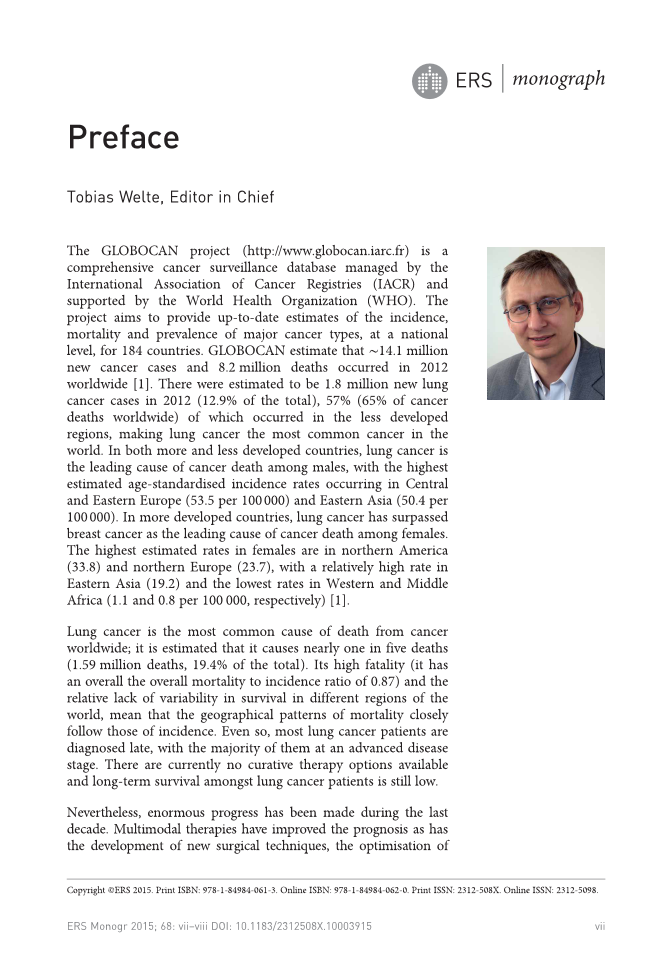ERS | monograph Preface Tobias Welte, Editor in Chief The GLOBOCAN project (http://www.globocan.iarc.fr) is a comprehensive cancer surveillance database managed by the International Association of Cancer Registries (IACR) and supported by the World Health Organization (WHO). The project aims to provide up-to-date estimates of the incidence, mortality and prevalence of major cancer types, at a national level, for 184 countries. GLOBOCAN estimate that ∼14.1 million new cancer cases and 8.2 million deaths occurred in 2012 worldwide [1]. There were estimated to be 1.8 million new lung cancer cases in 2012 (12.9% of the total), 57% (65% of cancer deaths worldwide) of which occurred in the less developed regions, making lung cancer the most common cancer in the world. In both more and less developed countries, lung cancer is the leading cause of cancer death among males, with the highest estimated age-standardised incidence rates occurring in Central and Eastern Europe (53.5 per 100000) and Eastern Asia (50.4 per 100000). In more developed countries, lung cancer has surpassed breast cancer as the leading cause of cancer death among females. The highest estimated rates in females are in northern America (33.8) and northern Europe (23.7), with a relatively high rate in Eastern Asia (19.2) and the lowest rates in Western and Middle Africa (1.1 and 0.8 per 100 000, respectively) [1]. Lung cancer is the most common cause of death from cancer worldwide it is estimated that it causes nearly one in five deaths (1.59 million deaths, 19.4% of the total). Its high fatality (it has an overall the overall mortality to incidence ratio of 0.87) and the relative lack of variability in survival in different regions of the world, mean that the geographical patterns of mortality closely follow those of incidence. Even so, most lung cancer patients are diagnosed late, with the majority of them at an advanced disease stage. There are currently no curative therapy options available and long-term survival amongst lung cancer patients is still low. Nevertheless, enormous progress has been made during the last decade. Multimodal therapies have improved the prognosis as has the development of new surgical techniques, the optimisation of Copyright ©ERS 2015. Print ISBN: 978-1-84984-061-3. Online ISBN: 978-1-84984-062-0. Print ISSN: 2312-508X. Online ISSN: 2312-5098. ERS Monogr 2015 68: vii–viii DOI: 10.1183/2312508X.10003915 vii
